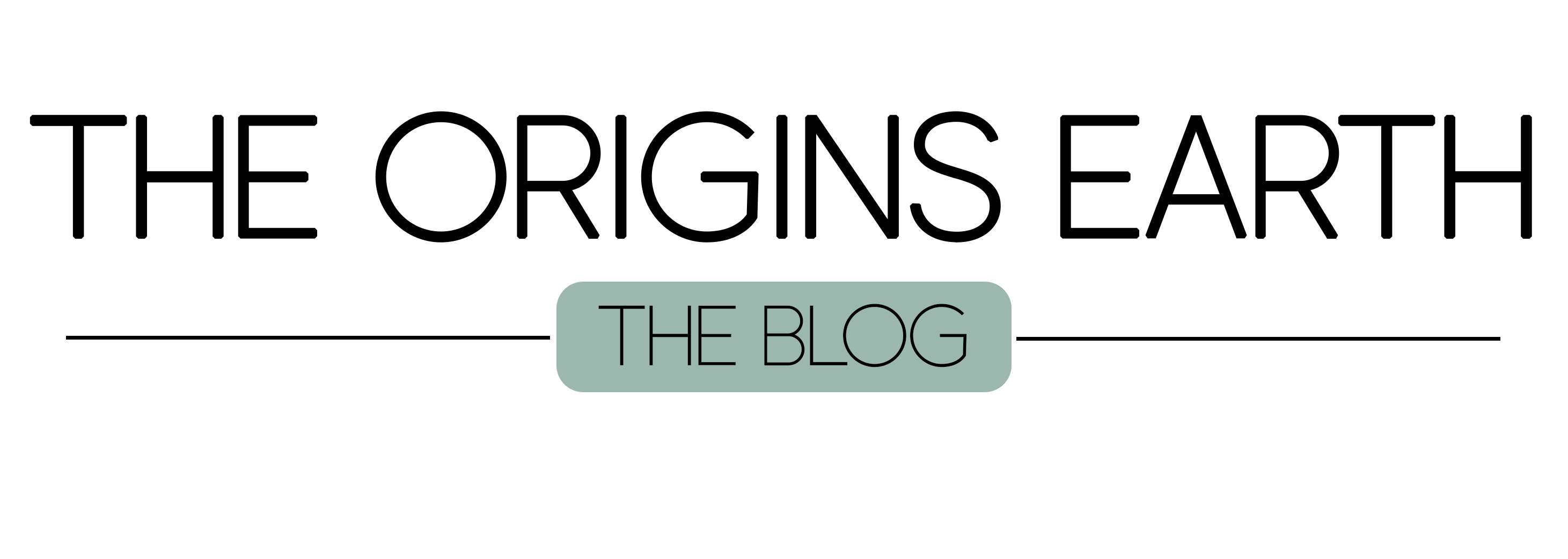Reconnect with your skin
Shaving is a regular part of personal care for many people — whether it’s the legs, underarms, or bikini area. While commercial shaving products are widely used, they are often irritating, polluting, and unfriendly to both our skin and the environment.
Industrial shaving foams, commonly found in stores, often lead to skin irritation, produce non-recyclable waste, and contain questionable ingredients. But what if we returned to simpler, more natural ways of shaving? It’s absolutely possible to shave without store-bought foam, using natural, eco-friendly, and affordable alternatives. This is better not only for your body but also for the planet.
❌ Why you should ditch conventional shaving foam
Commercial foams are designed to create lather quickly, help the razor glide smoothly, and leave a pleasant scent. However, they often contain surfactants that can irritate, dry out, or weaken the skin’s natural protective barrier — especially sensitive areas like the underarms or bikini line. These products also typically include synthetic fragrances and preservatives, whose long-term impact is still unclear.
Packaging is another issue: most come in aerosol cans or plastic tubes, contributing to difficult-to-recycle waste and using propellants that harm air quality. So, by continuing to use these foams, we’re not only stressing our skin but also degrading the environment.
Problematic ingredients in conventional shaving foam:
- Irritating surfactants like Sodium Lauryl Sulfate (SLS) that damage the skin’s protective layer.
- Synthetic fragrances that can trigger allergies.
- Propellants such as butane or propane, used in aerosols.
- Chemical preservatives like parabens or phenoxyethanol.
Though these components help with foaming and texture, they are far from harmless — especially for sensitive skin.
A heavy and often underestimated environmental impact
The use of shaving foams comes with a significant environmental cost, and understanding these impacts helps explain why switching to natural alternatives is a responsible choice.
Shaving foams are mostly sold in aerosol cans made of aluminum or steel, combined with a plastic valve and cap. While these materials can be recycled separately, in practice it remains very challenging. The presence of product residue, the mix of materials, and insufficient recycling infrastructure often result in these containers being sent to landfills or incinerated.
As a result, each can, whether used or discarded, contributes to the growing problem of plastic waste — a major environmental threat.
Propellant gases: A significant impact on air quality
Aerosol foams require propellant gases to dispense the product in foam form. These gases are volatile hydrocarbons such as butane, propane, or fluorinated gases. While they have replaced older chlorofluorocarbons (CFCs) — known for destroying the ozone layer — they are still volatile organic compounds (VOCs).
VOCs contribute to the formation of photochemical smog and play a role in local air pollution, especially in densely populated urban areas. They can also have an indirect impact on climate change. Although the carbon footprint of a single can of shaving foam may seem minor on an individual scale, when multiplied by millions of users worldwide, it becomes significant.
Unnecessary over-packaging
Finally, it’s important to note that these products are often over-packaged. In addition to the aluminum or plastic bottle, they frequently come with cardboard boxes, instruction leaflets, and sometimes even a protective plastic film. This excess packaging is often more about attracting consumers than actually protecting the product.
Such over-packaging increases the product’s environmental footprint, as it requires more raw materials, more energy to produce, more transportation, and it generates more waste to be recycled or disposed of.
In summary:
- Commercial shaving foam often comes in non-recyclable packaging.
- Propellants contribute to air pollution.
- Over-packaging adds to environmental waste.
Result: a daily-use product with a high environmental cost and questionable benefit.
🌿 What are the best natural alternatives to shaving foam?
- Vegetable oils: Lubrication and skin nourishment
Vegetable oils are a fantastic alternative to commercial foams.
They’re rich in essential fatty acids that help rebuild the skin’s hydrolipid barrier, which retains moisture and shields from irritation.
Key beneficial compounds include:
- Unsaturated fatty acids (omega-3, 6, 9) with anti-inflammatory and regenerative properties.
- Saturated fats, which provide a thicker, more protective texture.
This lipid-rich content forms a protective film, reducing razor friction and skin irritation.
Specific benefits of vegetable oils:
- Hydrating: Deep moisture without clogging pores.
- Nourishing: Makes skin soft and resilient.
- Soothing: Oils like almond or calendula calm irritation.
- Antioxidant: Rich in vitamin E and other antioxidants.
- Antibacterial/antifungal: Coconut oil helps prevent skin infections.
Texture and glide for an effective shave
The slightly oily and fluid texture of vegetable oils creates a smooth film on the skin. This film significantly reduces friction between the razor blade and the skin, making it easier to cut hairs without snagging. Unlike traditional foam, the oil does not lather, but it provides optimal comfort.
Moreover, this oily layer helps to maintain hydration, preventing the skin from drying out or becoming irritated—common causes of post-shave irritation.
Recommended Oils:
- Coconut oil: Great glide, antibacterial, deeply nourishing.
- Sweet almond oil: Gentle, hypoallergenic — ideal for sensitive areas.
- Jojoba oil: Balances sebum, non-greasy.
- Hazelnut oil: Light and quickly absorbed.
- Argan oil: Rich in antioxidants — great for dry or mature skin.
- Olive oil: Nourishing but thicker — best for legs.
How to Use:
- Wet the skin with warm water.
- Apply a thin layer of oil.
- Shave gently, following the direction of hair growth.
- Rinse the razor frequently.
- Wipe off excess oil with a warm cloth or rinse with warm water.
💡 Tip: A small amount of oil goes a long way — and can also be used as an aftershave moisturizer.
- Cold-Process Soap: Natural and protective
It is a cold-process soap (CPS), made using an ancient natural method where vegetable oils and butters are not heated, preserving their natural properties, especially the glycerin produced during saponification. CPS creates a creamy, stable foam, ideal for smooth razor glide while gently cleansing the skin. It contains no harsh detergents, artificial fragrances, or synthetic preservatives, making it an excellent choice for sensitive or irritation-prone skin.
It is especially recommended for shaving legs and underarms, areas where the skin is often more reactive to chemicals. For the bikini area, where the skin is thinner and more delicate, it’s better to choose a CPS soap without essential oils to avoid any reaction or burning sensation.
Unlike industrial soaps, CPS is naturally superfat, meaning it contains a portion of unsaponified oils that remain to nourish the skin. Gentle, moisturizing, and fully biodegradable, it respects both the skin and the environment.
As for usage, it’s very simple: just wet the skin with warm water to open pores and soften hairs, then lather the soap between your hands or directly on the skin. Once the foam is formed, apply it to the area to be shaved, shave as usual, and rinse with clear water. The feeling left by a good CPS soap is clean, soft skin without tightness.
To extend the life of your soap, remember to store it in a dry place, ideally on a soap dish that allows water to drain. A well-dried soap after use can last several weeks, even months, while providing generous foam and consistent effectiveness.
How to Use:
- Wet your skin with warm water to open pores.
- Lather the soap in your hands or directly on the skin.
- Apply the foam, shave normally, then rinse.
🌿 Keep the soap dry between uses (on a soap dish) to make it last for weeks or months.
- Aloe Vera Gel: Hydration and soothing
Aloe vera gel is a natural ingredient with multiple benefits, especially suited for shaving sensitive areas. This translucent gel, extracted from the pulp of the aloe barbadensis plant, is known for its soothing, moisturizing, and repairing properties, making it a perfect ally for fragile or reactive skin.
Used before shaving, aloe vera forms a thin, slippery layer that eases the razor’s glide, especially over fine hairs, without irritating the skin. It acts somewhat like a plant-based lubricant, without a greasy feel, unlike some oils, which can make it more comfortable for those who prefer a “bare skin” sensation while shaving. Aloe vera also soothes redness, itching, and small bumps that can appear after shaving, particularly on sensitive areas like the bikini line or underarms.
This natural gel can therefore be used both before shaving, to prepare the skin, and after, to soothe and deeply hydrate. It is perfectly suitable for sensitive, atopic, or reactive skin, thanks to its gentle composition rich in polysaccharides and vitamins (A, C, E) that promote cell regeneration.
How to Use:
- Apply a thin layer to clean, damp skin.
- Shave gently with the grain.
- Reapply a small amount afterward to soothe and hydrate.
✅ Best for:
- Bikini area and underarms
- Reactive or atopic skin
💡 Use aloe vera gel that is 99% pure, with no alcohol, dyes, or synthetic fragrances. Keep it in the fridge for a refreshing, calming effect.
🧔 Natural shaving for men: Efficiency, care, and sustainability
Shaving is an essential part of many men’s daily routine, but it often comes with irritation, nicks, or sensitive skin—especially when using conventional products. Fortunately, there’s a more skin-friendly and eco-conscious alternative: natural shaving. Choosing a safety razor made of stainless steel or brass, which is sturdy and reusable, means saying goodbye to non-recyclable disposable razors that don’t last. Combined with simple, effective products like plant-based oils (such as jojoba, avocado, or sweet almond) or a cold-processed soap (also known as cold saponified or SAF soap), this shaving method offers excellent blade glide, reduces razor burn and ingrown hairs, and deeply nourishes the skin.
SAF soap, naturally rich in glycerin and moisturizing components, produces a creamy lather that prepares the skin without stripping it. Meanwhile, plant oils create a protective barrier, softening hair and minimizing irritation. For very sensitive skin or post-shave care, a touch of pure aloe vera gel calms inflammation and supports skin regeneration. These solutions are not only economical over time, but also biodegradable, free of harmful chemicals, and much gentler on the environment compared to aerosol foams or synthetic-filled gels.
Embracing natural shaving is more than a product swap—it’s a way to bring mindfulness back into a daily ritual. It becomes a moment of intentional self-care that combines performance, comfort, and responsibility. A modern, thoughtful choice that aligns with a more sustainable lifestyle.
🌎 Why natural shaving is truly eco-friendly
Adopting a natural shaving method allows you to take concrete ecological action, rooted in a lifestyle more respectful of the environment. Through simple and accessible steps, you can reduce your environmental footprint and take one step closer to a more sustainable bathroom routine.
Less waste, more common sense
Conventional shaving products, such as aerosol shaving foams or disposable razors, generate a significant amount of waste: plastic packaging, caps, cartridges, razor heads—not to mention aerosols, which are rarely properly recycled. In contrast, by opting for raw ingredients (like a vegetable oil or a cold-processed soap) and a refillable metal safety razor, you drastically reduce waste production in your routine.
A well-maintained solid soap can last for months, a vegetable oil can be used for shaving, body care, or hair care, and a durable razor can serve you for years without creating plastic pollution. These choices help break free from a single-use and constant waste mentality.
Less chemicals on your skin… and in wastewater
Choosing natural and simple alternatives—such as pure aloe vera gel, cold-processed soap, or organic vegetable oil—helps reduce your skin’s exposure to controversial substances and limits their release into the environment. These are biodegradable, gentle, and non-toxic products, both for your body and for the planet.
More conscious, more sustainable consumption
Opting for natural shaving also means adopting a more thoughtful consumption habit. By favouring raw, multi-use, or homemade products, you embrace a minimalist and ethical approach. You buy less, but better. You support artisans, local producers, or brands committed to slow cosmetics. And most importantly, you reclaim your daily routines, taking care of yourself simply and mindfully. It’s a way to respect yourself while also respecting the natural resources around us.
Choosing the razor: a durable tool for responsible shaving
At the heart of a natural shaving routine that respects both the skin and the planet, the choice of razor is crucial. While disposable plastic razors are still widespread, they are far from the most eco-friendly option. Non-recyclable, limited in use, and often individually packaged, they generate massive plastic waste. On the other hand, opting for a safety razor made of stainless steel or brass is a real game changer. This type of razor is reusable for life and only requires replacing the steel blades, which are easy to recycle and much cheaper per unit than traditional cartridges.
The safety razor combines durability, efficiency, and elegance. Contrary to popular belief, it is easy to handle: with a bit of practice, it offers a precise shave while minimizing irritation, especially when paired with proper skin preparation using an oil, a cold-processed soap (SAF), or aloe vera gel. It is also more hygienic because it can be fully disassembled and cleaned.
There are also other sustainable alternatives like razors with interchangeable heads or rechargeable electric razors, depending on personal preference. But in all cases, choosing a robust and reusable tool means saying no to planned obsolescence and yes to more conscious consumption.
The shaving industry: A look at the numbers
The shaving products industry today represents a colossal global market, reflecting both the scale of consumption and the ecological impact of hygiene and beauty habits. Shaving foams, gels, disposable or electric razors: millions of products are used every day worldwide. Yet, behind these impressive numbers lies a worrying environmental footprint. Here is a numerical overview to better understand the challenges.
🧴 Foams & gels: A booming market
In 2023, the global shaving foam market was valued at over $3.2 billion, projected to reach $4.7 billion by 2030, growing over 5% per year — driven by male grooming in both developed and emerging markets.
🪒 Disposable razors: silent plastic pollution
The king of convenience, disposable razors are a major pollution source.
BIC alone sells 11 million disposable razors per day, over 4 billion annually. These items are hard to recycle and typically end up in landfills or incinerators, breaking down over hundreds of years and releasing microplastics.
In 2023, the global disposable razor market was worth $3.5 billion, and it’s still growing.
🔁 Reusable razors: A growing trend
In response to these observations, more and more people are turning to sustainable solutions. The market for non-disposable razors, which notably includes:
- safety razors (with replaceable single blades),
- reusable cartridge razors,
- and rechargeable electric razors,
is also experiencing strong growth, estimated at over 7% per year. In 2023, the global men’s razor market, across all categories, was valued at approximately 27 billion dollars.
The safety razor is making a particularly strong comeback. Although a bit more expensive upfront (ranging from €20 to €60 depending on the model), it proves to be much more economical in the long run. Replacement blades cost less than €0.50 each, and the handle can last a lifetime if well maintained. This type of razor, often made of stainless steel, produces only a tiny metallic waste, which is fully recyclable.
🌿 The challenge: rethinking our consumption
These figures illustrate how even our simplest daily actions, like shaving, are linked to globalised and polluting production chains. Industrial shaving, although deeply ingrained in our habits, comes with a high environmental cost: raw materials, manufacturing, packaging, transport, end-of-life…
Adopting natural and sustainable alternatives, such as:
- plant-based oils or cold-processed soaps (CP soaps) to replace aerosol foams,
- a safety razor or rechargeable electric razor instead of a disposable plastic one,
not only helps reduce your ecological footprint but also encourages a more respectful, slower consumption aligned with eco-responsibility values.
And you, ready to switch to natural shaving?
Taking care of yourself without harming the environment is possible. Natural shaving is more than just a product change: it’s a transformation of our relationship with beauty, simplicity, and respect for life. Your skin will thank you, and so will the planet.
In conclusion: for a gentle, simple, and sustainable shave
Adopting a natural shaving method is much more than a simple habit change—it’s a true conscious choice. By swapping industrial foams and disposable razors for healthy, ecological, and effective alternatives like plant oils, cold-processed soap, or aloe vera gel, you care for your skin gently while reducing your impact on the planet.
This return to basics requires neither excessive effort nor compromise on effectiveness. On the contrary, it fits into a broader responsible consumption approach where every action counts. Less plastic, less chemicals, more well-being and simplicity: natural shaving has it all.
So, why not transform this often routine moment into an act of care, for yourself and for the planet?
Illustrative photo: from canva.com
Internet sources:
- Green shop.ch – Les clés d’un bon rasage au naturel
- Pure shave – The environmental impact of natural shaving products
- Purity Heaven – Rasoir de sureté
- The Green alternatives – Eco-friendly shaving cream alternatives
- Naked sustainability – Zero waste shave
- Green washing index – Zero waste shaving














